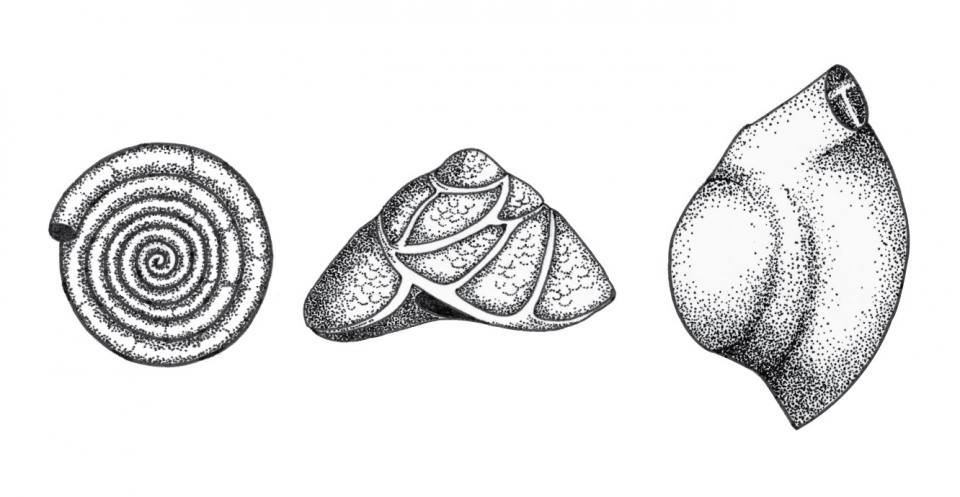My name is Kotryna Savickaite and I have recently taken up the position of geochemistry technician at the Stable Isotope Facility at BGS in Keyworth. My main responsibilities involve analysing the geochemistry of carbonate samples, in particular the amount of organic material in them and their stable isotope geochemistry, which tells us about the environment in which they were originally deposited. This is increasingly important as the human impact on the planet is changing the environment.
I have also begun training on how to prepare and analyse tiny foraminifera shells for oxygen and carbon isotopes, which can reveal an amazing amount of information, such as the temperature of the water they lived in and how productive (how well they liked their environment) they were. This research can help provide an understanding of past ocean temperatures, which in turn can help predict future changes to our climate.
In order to conduct this work, I am also learning about stable isotope ratio mass spectrometry. BGS actually hosts part of the National Environmental Isotope Facility, within which the Stable Isotope Facility sits.

Examples of foraminifera. Cornuspira (left); Asterigerinata (centre) and Quinqueloculina (right). BGS © UKRI.
Before starting my position at BGS, I graduated with a masters degree in geology from the University of Leicester, but having previously gone to school and college in Nottingham, it has been great to be back to the area in which I grew up.
My interest in both stable and radiogenic isotopes began while I was studying at university, primarily because just a few milligrams, or even just one mineral, can give us so much information about a material. My dissertation focused on terrestrial output and its effects on corals, with stable isotopes helping to pinpoint types and sources of pollution, whilst my masters thesis focused on sample preparation methods and how these can affect results of a portable X-ray fluorescence analyser down to soil guideline values.
At BGS, my role has been quite varied. I can go from washing and preparing samples in beakers to weighing samples and standards down to less than 1 mg (which incidentally is very difficult to see by eye). A lot of my work is quite independent and, although I can always ask my mentors Dr Jack Lacey and Dr Savannah Worne for help (many thanks for the training I have received from them!), I do appreciate the opportunity to work alone. It gives me the chance to learn and deal with problems as they arise and to manage work as I prepare samples for numerous projects at the same time.
As previously mentioned, I have also recently begun training to run a mass spectrometer for foraminifera analysis. This training includes weighing of samples, loading them into the machine, handling liquid nitrogen and setting up software to run the samples. I have also helped with troubleshooting and replacing of broken structural components. As become more independent, I will prepare and run samples for various projects and students.

The BGS Wilding Group after a lunch spent creating a habitat for grass snakes and clearing brambles to make this area a pleasant sitting area for staff. BGS © UKRI.
There are lots of opportunities to get involved in other initiatives within BGS. I have enjoyed being part of the staff wilding group. This is a staff group that undertakes various projects to help re-wild sections of the BGS site, increasing biodiversity and nature on site. So far I have helped plant bluebells and snowdrops in the Mary Ward nature area and recently we created a habitat suitable for grass snakes — we are even thinking of calling this area the ‘Snake Wood’! My colleagues at BGS are very sociable and welcoming and I look forward to developing my future career here.
About the author
Kotryna Savickaite is a geochemistry technician at BGS. Kotryna graduated from the University of Leicester with a masters in geology and has developed a research interest in stable and radiogenic isotopes.
